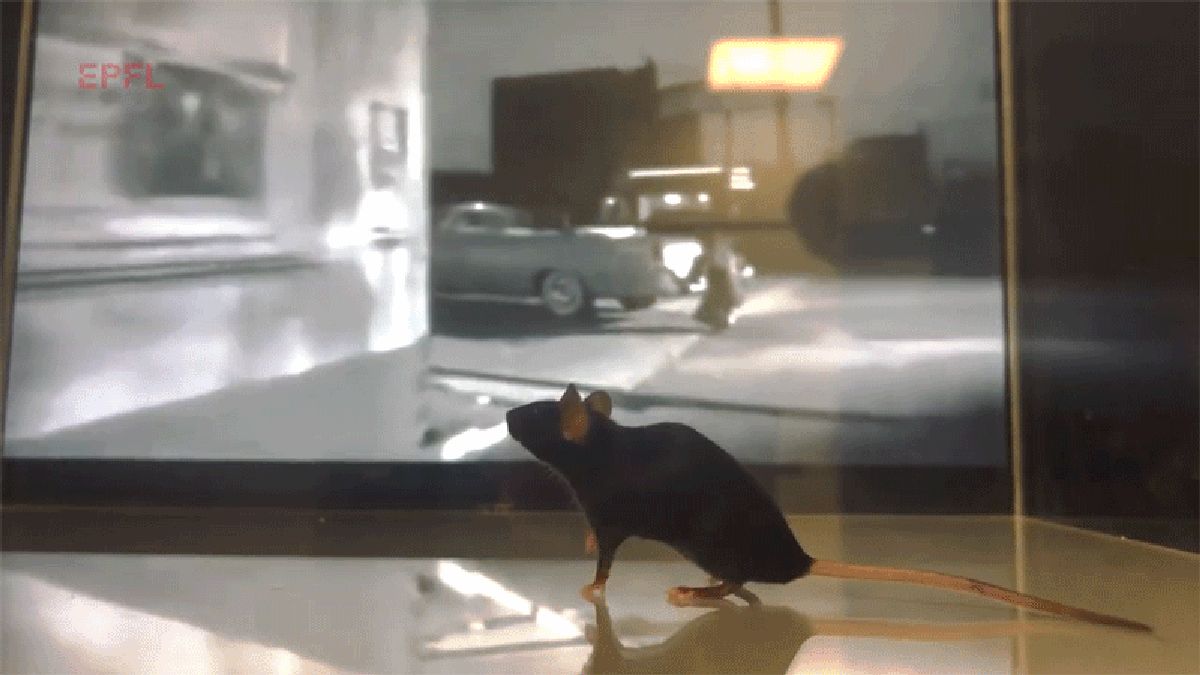Researchers See Through a Mouse's Eyes by Decoding Brain Signals
What was once the realm of science fiction and grifters who claim to have psychic powers takes another step towards reality as a team of researchers from the École Polytechnique Fédérale de Lausanne (EPFL) successfully developed a machine-learning algorithm that can decode a mouse’s brain signals and reproduce images of what it’s seeing.
Before you share this new research to your Facebook group or email friends and family in a panic telling them it’s time to don their tin foil hats, this breakthrough doesn’t yet mean that shadowy government types can covertly read your thoughts—we’re still a long way off from that reality. But it’s a fascinating next step that potentially paves the way for improvements in how we study both human and animal brains, and how we understand the brain’s reactions to visual and other stimuli.
Advertisement
Reading and decoding the electrical activity going on in a brain isn’t a new area of research. Back in 2011, scientists at UC Berkeley revealed that they were able to generate crude video that looked eerily similar to various movie trailers that subjects inside an MRI machine were watching. In 2013, researchers from Radboud University Nijmegen in the Netherlands revealed that they were able to determine what letter of the alphabet test subjects were looking at based on their brain activity.
The research revealed by Switzerland’s EFPL today focused on mice, instead of humans. The mice were shown a black and white movie clip from the 1960s of a man running to a car and then opening its trunk. While the mice were watching the clip, scientists measured and recorded their brain activity using two approaches: electrode probes inserted into their brains’ visual cortex region, as well as optical probes for mice that had been genetically engineered so that the neurons in their brains glow green when firing and transmitting information. That data was then used to train a new machine learning algorithm called CEBRA.
See through the eyes of a mouse by decoding brain signals
When then applied to the captured brain signals of a new mouse watching the black and white movie clip for the first time, the CEBRA algorithm was able to correctly identify specific frames the mouse wa s seeing as it watched. B ecause CEBRA was also trained on that clip, it was also able to generate matching frames that were a near perfect match, but with the occasional telltale distortions of AI-generated imagery.
80% Off Poweart Cordless Vacuum Cleaner - Down From $700 to $140 Suck it up
This vacuum cleaner has two power modes, can hit up to 30,000PA of suction power, and has a run time of up to 50 minutes too, plus, it’s light, and the discount is deep. Buy for $140 from Amazon Advertisement
Does this mean a mouse with a brain probe could be used as a covert spy tool, with remote brain readings being used to decode everything it sees? Probably not. This research involved a very specific (and short) piece of footage that the machine learning algorithm was also familiar with. In its current form, CEBRA also really only takes into account the activity from about 1% of the neurons in a mouse’s brain, so there’s definitely room for its accuracy and capabilities to improve. The research also isn’t just about decoding what a brain sees. A study, published in the journal, Nature, shows that CEBRA can also be used to “predict the movements of the arm in primates,” and “reconstruct the positions of rats as they freely run around an arena.” It’s a potentially far more accurate way to peer into the brain, and understand how all the neural activity correlates to what is being processed.
Source: Gizmodo


